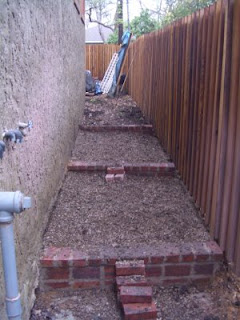
Reference historical DJIA (log scale)
Self Organized Criticality (SOC) is a model to describe the dynamics of certain kinds of systems built out of many interacting non-linear actors. The "sand pile" model" relates the frequency of avalances to their magnitude by 1/f (i.e. avalances happen with inverse frequency to their size).
It seems intuitive that economic systems should also show this "sand pile" behavior and this paper claims that stock markets do indeed show "near-self organized critical" behavior. (The exact function is not relevant to my argument.) This intuition for this comes from the fact that each economic actor relies on others in a complicated web of interactions. The value of assets in the system are subjective and are strongly biased by the perception of other actor's subjectively valued assets. Moreover, the perceived future value of those assets is a strong function of the cultural perception of the unknown future. In other words, the macroeconomic system is in a strong, multi-scale, positive feedback.
In the sandpile model, a few grains of sand will end up holding an enormous load of upstream stress and therefore their perturbation will create large avalanches. Analogously, a few economic actors (insurance companies, banks, hedge funds, etc) will end up with an enormous load of upstream dependencies that will similarly cause avalanches if they are disrupted.
In the sand pile model one can imagine a large conical basin of uphill dependencies resting on a few critical grains -- those critical bits are the ones that are "too big to be allowed to fail". Playing very loosely with the analogy, the stress on a gain from its uphill neighbors is analogous to the balance sheets of an economic actor. But not exactly. In the sand pile, all potential energy is explicitly accounted for -- there's no hiding the cumulative stresses due to the weight of each particle. This is not true in the economic analog. Real balance sheets do not account for total stresses because complicated financial transactions (like mortgages and insurance contracts) contain off-balance-sheet information that is usually one-way. For example, when a bank realizes that there is risk in a mortgage they will pass on this cost to the uphill actor but when a debtor realizes that there's more risk (for example, they might know that their financial situation is not as stable as it appears on paper) they will not pass along this information. In other words, there will tend to be even more uphill stress than is accounted for by the balance sheets of each downhill actor.
Now the point.
If you wanted to reduce the number of large scale catastrophic avalanches in the sand pile model, the method for doing so is easy: add noise. The vibration of the sand pile would ensure that potential energy in excess of the noise energy would not be allowed to build up. It's the same idea of forest management -- lots of small fires prevent larger ones. Therefore, by analogy, a good strategy for the Federal Reserve might be to similarly add noise. Conveniently, this "add noise" strategy is inherently simpler to execute than is their current strategy -- they would simply roll a die every few months and change the discount rate by some number between zero and ten percent.
Crazy? Well, as it stands now, the Federal Reserve operates under the belief that it can act as a negative-feedback regulator of the macro economic system. The idea is sound, but based on my experience attempting to control even very simple systems, I'm skeptical of the reality. To begin with the obvious, the economy is anything but simple. Furthermore, the Fed does not have, never has had, and never will have, an accurate measurement of the economy. To wit: it neglected the huge volume of CDOs built up in the last 10 years, and the S&L stress of the 80s, and the tech bubble of the 90s, etc, etc. History shows that there have always been, and will always be, bubbles and newfangled leveraging instruments so anything short of draconian regulation that stopped all financial innovation (which would be worse) will not be anything but reactive. But it gets worse. There are also large and unpredictable latencies in both the measurements and the results of the Fed's actions. Even in simple linear systems, such latencies can have destabilizing effects and since the macro economic system is highly non-linear and constantly evolving the effects are essentially unknowable apriori.
In summary, I suspect that the macroeconomic system is not directly controllable in the way that is envisioned by the creators of the Federal Reserve due to non-linearity, poor measurability, and latency. Therefore, given that the economy probably has some SOC like organization, I suspect that random Fed moves would probably be no worse than the current strategy and would probably be better.





























